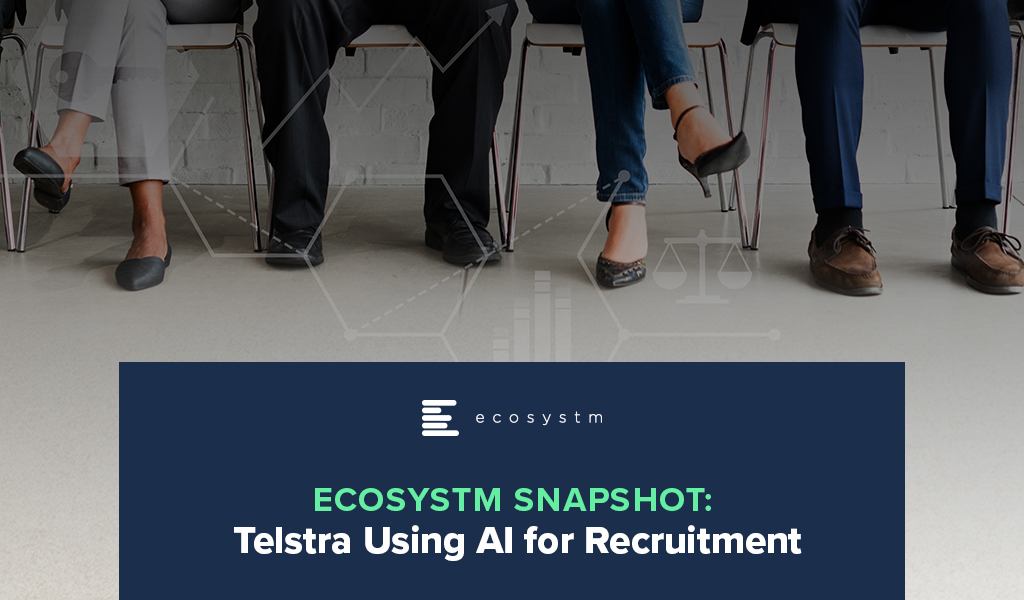In 2018, DBS Bank came together with AI start-up impress.ai to implement Jim – Job Intelligence Maestro – a chatbot that helps the bank shortlist candidates for positions in their wealth planning team. This is primarily for screening for entry-level positions. Apart from process efficiency, the introduction of AI in the recruitment process is also aimed at eliminating bias and objectively finding the right candidate for the right job. The DBS chatbot uses cognitive and personality tests to assess candidates, as well as providing them with answers to the candidates’ frequently asked questions. The scores are then passed on to actual recruiters who continue with the rest of the recruitment process. DBS claims that they have curtailed the initial assessment time of each applicant by an average of 22 minutes.
While some organisations have started evaluating the use of AI in their HR function, it has not reached a mass-market yet. In the global Ecosystm AI study, we find that nearly 88% of global organisations do not involve HR in their AI projects. However, the use cases of AI in HR are many and the function should be an active stakeholder in AI investments in customer-focused industries.
Telstra employs AI to vet Applicants
Last month, Australia’s biggest telecommunications provider Telstra announced its plans to hire 1,000 temporary contact centre staff in Australia to meet the surge in demand amidst the global pandemic. In response to the openings, Telstra received overwhelming 19,000 applications to go through and filter, with limited workforce. To make the recruitment process more efficient, the company has been using AI to filter the applications – and has been able to make initial offers two weeks from the screening. The AI software takes the candidates’ inputs and processes them to find the right match for the required skills. The candidates are also presented with cognitive games to measure their assessment scores.
Ecosystm Principal Advisor, Audrey William speaks about the pressure on companies such as Telstra to hire faster for their contact centres. “Several organisations are needing to replace agents in their offshore locations and hire agents onshore. Since this is crucial to the customer experience they deliver, speed is of essence.” However, William warns that the job does not stop with recruiting the right number of agents. “HR teams will need to follow through with a number of processes including setting up home-based employees, training them adequately for the high volume of voice and non-voice interactions and compliance and so on.”
The Future of AI in HR
William sees more companies adopting AI in their HR practices in the Workplace of the Future – and the role of AI will not be restricted to recruitment alone. “A satisfied employee will go the extra mile to deliver better customer experience and it is important to keep evaluating how satisfied your employees are. AI-driven sentiment analysis will replace employee surveys which can be subjective in nature. This will include assessing the spoken words and the emotions of an individual which cannot be captured in a survey.”
In the future, William sees an intelligent conversational AI platform as an HR feedback and engagement platform for staff to engage on what they would like to see, what they are unhappy about, their workplace issues, what they consider their successes and so on. This will be actionable intelligence for HR teams. “But for a conversational AI platform to work well and to encourage users within the organisation to use it, it must be designed well. While it has to be engaging to ensure employee uptake, the design does not stop at user experience. It must include a careful evaluation of the various data sets that should be assessed and how the AI can get easy access to that data.”
AI and Ethics
With the increased use of AI, the elephant in the room is always ethical considerations. While the future may see HR practices using conversational AI platforms, how ethical is it to evaluate your employees constantly and what will be the impact on them? How will the organisation use that data? Will it end up giving employers the right reasons to reduce manpower at will? These and allied issues are areas where stricter government mandates are required.
Going back to AI-assisted recruitment, William warns, “Bias must be assessed from all angles – race, education, gender, voice, accents. Whilst many platforms claim that their solution removes bias, the most important part of getting this right is to make sure that the input data is right from the start. The outcomes desired from the process must be tested – and tested in many different ways – before the organisation can start using AI to eliminate bias. There is also the added angle of the ethical use of the data.”


